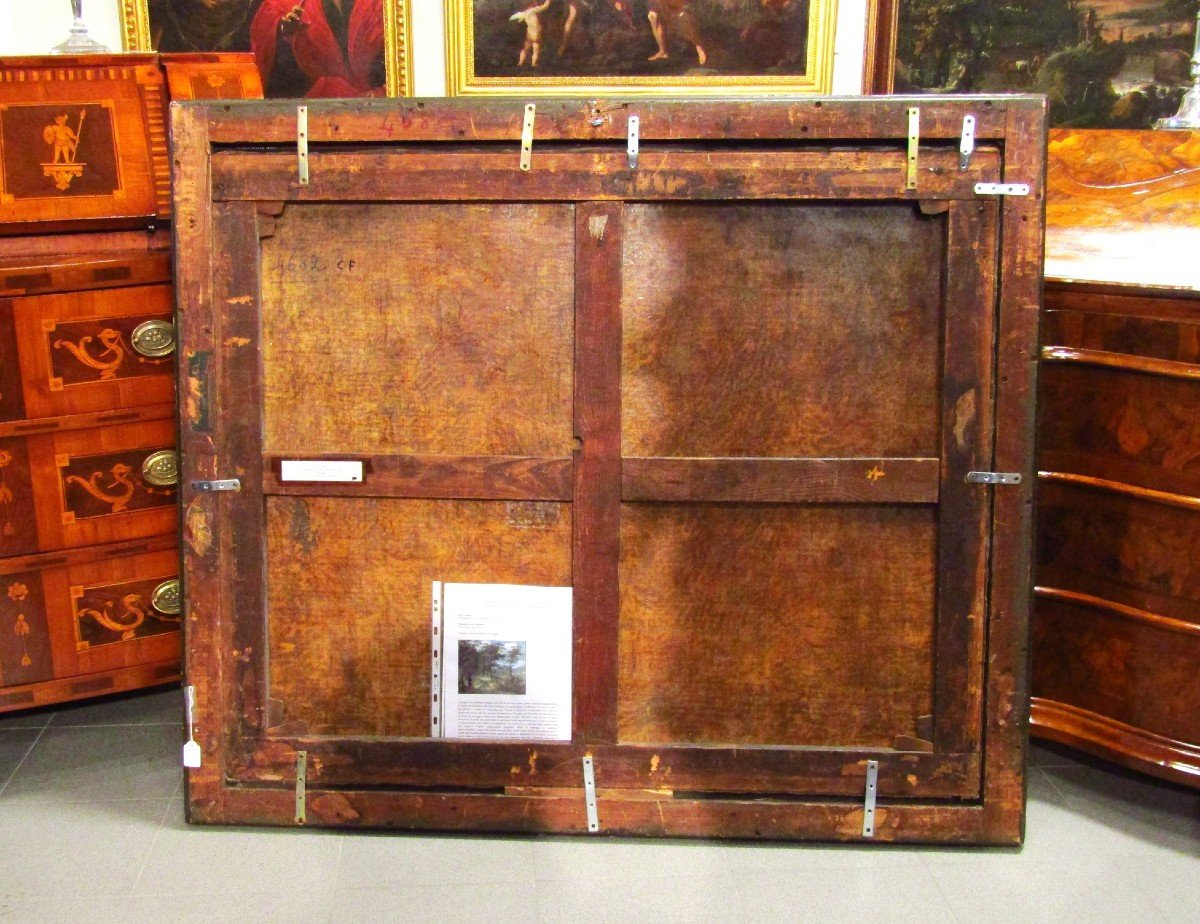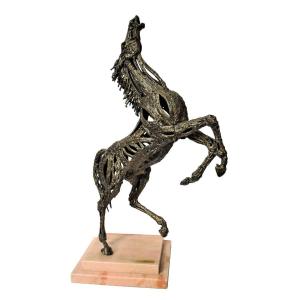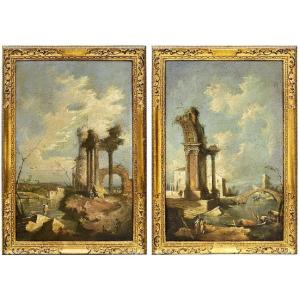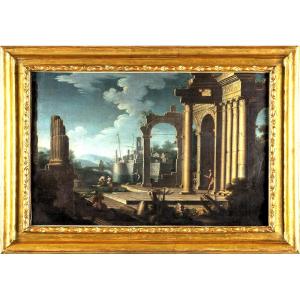(Amsterdam, 1618 - England 1681)
"Wood landscape with wayfarers and village in the distance"
Oil painting on canvas
Ancient golden frame
Canvas cm. 100x120
Frame 117 x 134
Provenance: Sotheby's, Old Master and Paintings, Amsterdam 7.11.2000 (lot 28)
The painting is accompanied by a written report by Prof. Raffaella Colace
This important large-scale painting on canvas is a beautiful example of the art of Jan Looten, a contemporary Dutch painter of Jacob Van Ruisdael and Meindert Hobbema, from whom he is strongly influenced.
Since 1660 his activity has taken place in Amsterdam (then the artist moved to England where he had great success), a city which, next to Harlem, was one of the most important centers for landscape painting, increasingly characterized in a natural and aimed at the rendering of atmospheric and tonal effects that are expressed very well in the representation of luminous seascapes and wooded landscapes
Looten prefers the latter and represents them with glimpses of the undergrowth illuminated by a full and strong sunlight that pierces the shadow reaching suggestive effects of contrast.
The artist's paintings are particularly characterized by the slender trees along the paths that run towards the heart of the forest, casting long shadows on the ground and cutting their branches moved by the wind against a blue sky crossed by white and frothy clouds.
Equally recurrent, the dry vegetation, the broken trunks and the large roots that almost always appear in the foreground, giving a sense of uncultivated wilderness: a solitary and unexplored nature that of Looten, which welcomes a few characters, a few hunters or wayfarers, silent presences humans within a majestic nature.
The splendid painting examined here represents all these stylistic elements very well, also offering us an essay of the artist's refined technical skill in the description of the details, the most diverse forms of the trees of the vegetation, the fronds dotted with touches of light, the small village in the distance rendered with the tip of a brush. All through a smooth and compact painting and a palette played on green, grey, yellow and blue stamps.
A typically Nordic analytical eye, which fits perfectly with the airy sense of view which from its raised point of view captures distances where, in an open valley, the dramatic tangle of light in the vegetation of the forest seems to calm down and relax and the clear vision of the first floors gives way to fading effects.
Beyond the individual figurative elements, however, it is the sense of depth and the luministic score that really strikes you in this landscape, real and fantastic at the same time.
In the catalog of public works by Looten, rightly considered one of the most interesting landscape painters present in Amsterdam in the mid-seventeenth century, significant terms of comparison can be found between the painting in question and the canvases executed in the 1950s and 1960s.
For example, the wooded landscape of the Boymans Van Beuningen museum in Rotterdam dated 1658 and that of the Gemaldegalerie in Kassel, in which we find, beyond the individual figurative elements, the same compositional system with the path towards the forest in the foreground and the opening side of a valley.
The canvas is in excellent condition and complete with a beautiful antique gilded frame.


















































 Le Magazine de PROANTIC
Le Magazine de PROANTIC TRÉSORS Magazine
TRÉSORS Magazine Rivista Artiquariato
Rivista Artiquariato